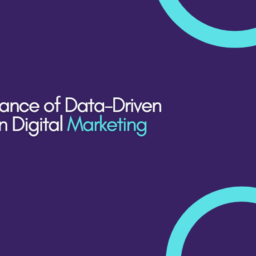In the ever-evolving landscape of digital marketing, businesses are constantly seeking ways to maximize their return on investment (ROI). One of the most significant advancements in this realm is the rise of AI-powered ad targeting. By leveraging sophisticated algorithms and data analytics, AI is transforming how advertisers approach their campaigns, enabling them to reach the right audience at the right time. In this blog, we’ll explore how AI-powered ad targeting works and how it can help improve ROI through smart automation.
Understanding AI-Powered Ad Targeting
AI-powered ad targeting utilizes machine learning algorithms to analyze vast amounts of data, identify patterns, and predict consumer behavior. This technology enables advertisers to create highly personalized and relevant ad experiences, increasing the likelihood of engagement and conversion.
Key Components of AI-Powered Ad Targeting
- Data Collection and Analysis
- AI systems gather data from various sources, including user interactions, browsing history, demographics, and social media activity. By analyzing this data, AI can identify trends and insights that inform targeting strategies.
- Audience Segmentation
- AI algorithms can segment audiences into specific groups based on shared characteristics or behaviors. This segmentation allows advertisers to tailor their messages to resonate with different audience segments, enhancing relevance and effectiveness.
- Predictive Analytics
- By analyzing historical data, AI can predict future consumer behavior, such as the likelihood of purchasing a product or engaging with an ad. This predictive capability enables advertisers to focus their resources on high-potential leads.
Benefits of AI-Powered Ad Targeting
1. Enhanced Precision
AI-powered targeting allows for more precise ad placement. By analyzing user data, AI can identify the optimal times and platforms to display ads, ensuring they reach users when they are most likely to engage. This precision reduces wasted ad spend and increases overall campaign efficiency.
2. Improved Personalization
Personalized advertising is key to capturing consumer attention. AI can analyze individual preferences and behaviors to create tailored ad experiences. For instance, AI can recommend products based on past purchases or browsing history, making ads more relevant and engaging.
3. Real-Time Optimization
One of the most significant advantages of AI in ad targeting is its ability to optimize campaigns in real-time. AI algorithms continuously analyze performance data and adjust targeting parameters, such as bidding strategies and audience segments, to maximize ROI. This dynamic approach ensures that advertisers can respond quickly to changing market conditions.
4. Cost Efficiency
By improving targeting accuracy and reducing wasted ad spend, AI-powered ad targeting enhances cost efficiency. Advertisers can allocate their budgets more effectively, focusing on high-performing segments and minimizing investment in underperforming areas.
5. Insights and Reporting
AI tools provide in-depth analytics and reporting capabilities, offering insights into campaign performance and audience behavior. Advertisers can leverage these insights to refine their strategies, identify trends, and make informed decisions for future campaigns.
Implementing AI-Powered Ad Targeting
1. Choose the Right Tools
There are numerous AI-powered advertising platforms available, each with its unique features and capabilities. When selecting a tool, consider factors such as ease of use, integration with existing systems, and the specific needs of your business.
2. Focus on Data Quality
The effectiveness of AI-powered ad targeting relies heavily on the quality of data. Ensure that your data collection methods are robust, and prioritize gathering clean, accurate, and relevant data to inform your targeting strategies.
3. Start Small and Scale
If you’re new to AI-powered ad targeting, consider starting with a small campaign to test the waters. Monitor performance closely and gather insights before scaling up your efforts. This gradual approach allows you to refine your strategies and optimize your campaigns effectively.
4. Monitor and Adjust
Continuous monitoring is essential for maximizing ROI. Regularly review campaign performance, analyze data, and make necessary adjustments based on insights gained. AI’s real-time optimization capabilities can help you stay agile in a dynamic market.
Conclusion
AI-powered ad targeting is revolutionizing the way businesses approach digital marketing, offering unprecedented precision, personalization, and efficiency. By leveraging smart automation, advertisers can improve their ROI and create more meaningful connections with their audience.
As AI technology continues to evolve, embracing these tools will become increasingly vital for businesses looking to stay competitive in the digital landscape. By understanding and implementing AI-powered targeting strategies, marketers can navigate the complexities of consumer behavior and drive successful advertising campaigns that deliver results.




